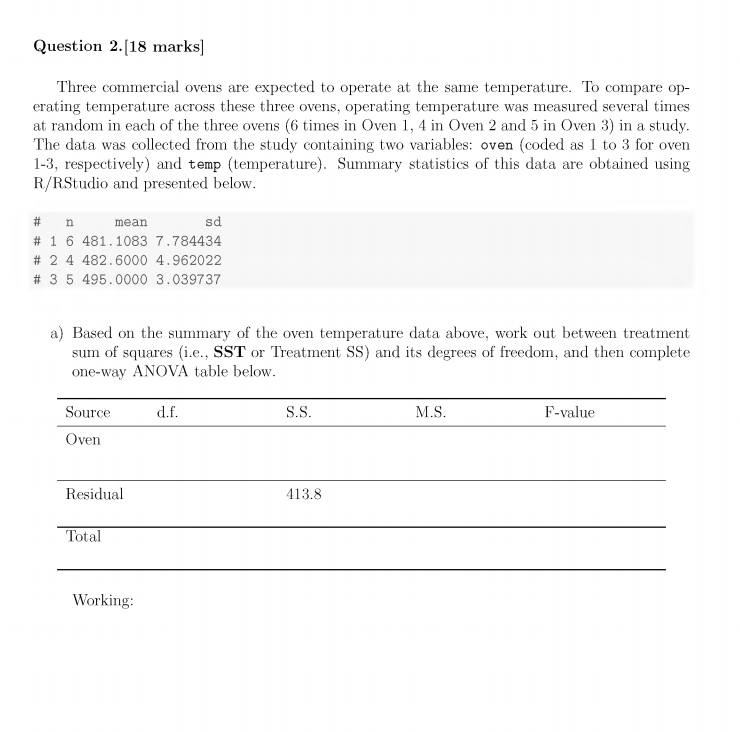Question 2.[18 marks] Three commercial ovens are expected to operate at the same temperature. To compare op- erating temperature across these three ovens, operating temperature was measured several times at random in each of the three ovens (6 times in Oven 1, 4 in Oven 2 and 5 in Oven 3) in a study. The data was collected from the study containing two variables: oven (coded as 1 to 3 for oven 1-3, respectively) and temp (temperature). Summary statistics of this data are obtained using R/RStudio and presented below. # n mean sd # 1 6 481 . 1083 7 .784434 # 2 4 482. 6000 4.962022 # 3 5 495. 0000 3.039737 a) Based on the summary of the oven temperature data above, work out between treatment sum of squares (i.e., SST or Treatment SS) and its degrees of freedom, and then complete one-way ANOVA table below. Source d.f. S.S. M.S. F-value Oven Residual 413.8 Total Working:b) ( From this part onwards, assuming that all test/ model assumptions are held.) Based on the results in the ANOVA table above, perform a hypothesis test to see if average/mean operating temperature is the same across the three ovens in this study. Remember to write down the null hypothesis and alternative hypothesis of the test, show the F-test statistic value and state its degrees of freedom (under the null hypothesis), give your evidence or reason for rejecting or not rejecting the null hypothesis and then a conclusion. (May use relevant statistical table attacked at the end of this paper.) c) From the two multiple pairwise procedures/methods covered in this unit, suggest an appro- priate method for multiple pairwise comparisons of all three ovens in this study (do NOT carry out the comparisons/tests). Why this one? d) After completing the analysis/test in part b), the chief investigator of this study ONLY wants to find out if the average operating temperature in Oven 3 is higher than that in Oven 1. To help the investigator, carry out an appropriate hypothesis test at 0.05 significance level. (Remember to write down null and alternative hypothesis, show test statistic and related degrees of freedom, and provide reason/evidence for rejecting or not rejecting the null hypothesis and then give your conclusion.)








